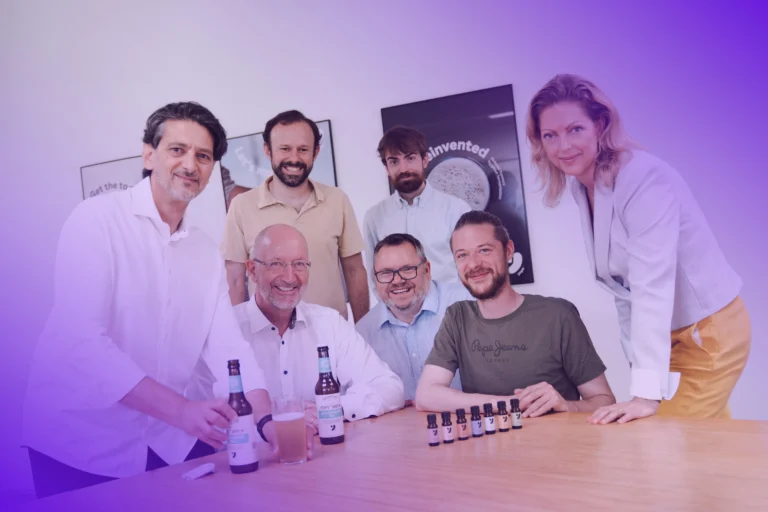

EU scrambles to safeguard food security as climate threatens protein supplies
As Europe battles record-breaking heat, droughts, and shifting weather patterns, climate change is no longer a distant threat but a growing force reshaping the continent’s food supply – and particularly its protein sources. From wilting wheat fields in Spain to dwindling fish stocks in the Mediterranean, new data from the European Parliamentary Research Service (EPRS) highlights that climate extremes are emerging as the single most common driver of food insecurity in the European Union.
In its July 2025 briefing, EPRS paints a stark picture of Europe’s food landscape. About 8.2% of the EU population now faces moderate-to-severe food insecurity, equating to roughly 12 million people whose access to affordable, nutritious food is under threat. The challenge is particularly acute in southern Europe, where droughts and heatwaves are battering agriculture, leading to falling yields, higher prices, and growing gaps in food security compared to the continent’s north.
One critical front in this fight is protein supply. Europe’s food system relies heavily on protein imports, especially for animal feed. According to the briefing, around 70-75% of the EU’s protein animal feed – largely soybeans – comes from outside its borders, primarily from Argentina, Brazil, and the USA. Climate impacts in these regions compound risks for the EU. As the EPRS notes, more than half of the EU’s imports of rice, maize, wheat, cocoa, coffee, and soy in 2023 originated from countries with low to medium climate readiness.
This import dependence makes Europe vulnerable to climate-related shocks abroad. In 2012, for example, one-third of global soybean production losses were linked to extreme heat and drought in the Americas. Looking ahead, the Intergovernmental Panel on Climate Change (IPCC) warns that at 2 degrees Celsius of warming, global cereal prices could jump by as much as 29% by 2050, adding further strain to Europe’s food costs.
Soaring feed costs mean that the meat sector faces particular pressure. The European Commission’s medium-term outlook projects that extreme weather could drive soybean producer prices nearly 90% higher by 2035, with downstream impacts on consumer prices for meat and dairy. Meanwhile, warming seas and ocean acidification are threatening Europe’s seafood sector, with mussel habitats in the Mediterranean expected to contract significantly by 2050. Overall, mussel habitat losses of about 290,000 square kilometers in southern waters are forecast to far exceed gains further north.
Against this turbulent backdrop, alternative proteins are moving from niche innovation to necessity. Plant-based proteins, single-cell proteins, and other novel food technologies are increasingly seen as part of Europe’s climate adaptation toolkit. The EPRS briefing emphasizes that shifting diets toward alternative proteins could reduce the need for arable land by 19% and lower water use by 12% globally, helping both mitigate and adapt to climate impacts.
Promoting alternative proteins is also seen as a way to diversify income streams for farmers, especially as traditional crops face greater weather risks. The Institute for European Environmental Policy has shown that sustainable practices, including the cultivation of less common crops and intercropping techniques, can help preserve soil health while supporting new protein sources. Meanwhile, research into neglected and underutilized plant species may expand Europe’s protein portfolio beyond soybeans and other conventional imports.
However, the transition is complex. Despite the promise of new technologies, the IPCC cautions that relying solely on technological solutions – dubbed 'technosalvation' – carries risks. While innovations like new genomic techniques (NGTs) might boost drought and disease resistance in crops, they are not a silver bullet. Extreme events such as floods remain harder to mitigate through technology alone, and the EPRS stresses the need for a more integrated approach combining sustainable farming, diversified food systems, and evolving dietary trends.
The European Union’s policy response so far has been uneven. The EPRS notes that the current Common Agricultural Policy (CAP) provides support for climate adaptation, including optional 'eco-schemes' to reward sustainable practices. Yet these measures often depend on voluntary participation and vary widely across Member States, with many focusing on short-term challenges rather than long-term resilience.
A recent simplification package proposed by the European Commission in May 2025 included changes to rules governing peatland and wetland conservation, potentially easing some climate adaptation burdens on farmers. However, the EPRS warns that such measures should not dilute efforts to preserve ecosystems that play crucial roles in climate mitigation and water management.
The European Green Deal’s farm to fork strategy initially sought to build a sustainable food system. Still, some proposals, such as a legislative framework for sustainable food systems, have stalled amid political pressures and recent farmer protests. The Commission’s newer Vision for Agriculture and Food, unveiled in February 2025, shifts the focus toward maintaining competitiveness and resilience, including strengthening incentives for farm-level adaptation and improving insurance schemes.
Yet significant gaps remain. The European Environment Agency’s European Climate Risk Assessment rates the risks to crop production as “critical” for southern Europe in the medium term. Wheat yields in southern Europe could drop by up to 49% by 2050 under high emissions scenarios, while grain maize yields could collapse by more than 80% in worst-case projections if irrigation fails due to water scarcity. Such dramatic declines heighten the urgency for alternative solutions.
The EPRS briefing also underscores the need for reducing food loss and waste – a strategy that could shrink the land required for food production and bolster overall resilience. Meanwhile, socio-economic measures like ensuring access to adequate food through income support or dynamic food pricing are being explored as tools to protect vulnerable populations.
Ultimately, Europe’s future food security may depend on how quickly and decisively it embraces alternative proteins and broader systemic changes. While technology offers tools, the path to climate resilience appears equally rooted in sustainable practices, diversified crops, and new dietary habits. In a warming Europe, protein might prove to be not just a matter of taste or tradition – but a question of survival.
If you have any questions or would like to get in touch with us, please email info@futureofproteinproduction.com


-p-800.jpg)



